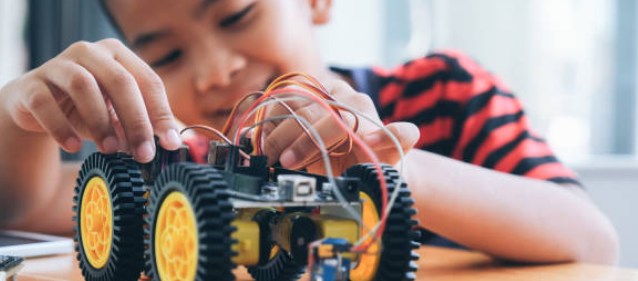
Robotics within the Academic Curriculum
Robotics proves to be a great ally to Mathematics or Physics due to its power to unleash young people's imagination and creativity. Thus, the development of robotic devices for various purposes can be used to clarify abstract concepts that are often difficult for children to grasp. (Vega, J. 2014).
The incorporation of robotics into the school curriculum is an excellent way to promote hands-on learning, critical thinking, and creativity among students. Here are some reasons why robotics can be beneficial within the school curriculum:
-
Stimulates Logical Thinking
Involves problem-solving and logical reasoning. This promotes critical thinking and helps develop analytical skills.
-
Fosters Creativity
Allows students to bring their ideas to life and design unique solutions. They can build custom robots and program them according to their vision.
-
Promotes Teamwork
Students often work in groups to design, build, and program robots. This fosters teamwork, effective communication, and conflict resolution skills.
-
Motivates Learning
Students can directly see the results of their actions and experiments. This can increase motivation and interest in learning.
To implement robotics in the school curriculum, different approaches can be considered. This can include creating robotics clubs, integrating robotics into the science and mathematics curriculum, participating in school-level robotics competitions, or incorporating robotics kits in the classroom. It is important to have the support of adequate resources and training for teachers and ensure that students have access to the necessary materials and infrastructure.